Learn all about the effects of zeolite on horses - answers to frequently asked questions
Why should horse feed be optimized with zeolite ?
1. Because horse feed can be contaminated with harmful substances .
Horse feed can be contaminated with harmful substances. Feed must be preserved. It's sometimes bought in large quantities, which then sit for a while and develop mycotoxins. A naturopath showed me exactly when mold starts to develop in pressed oats . It happens pretty quickly.
2. Because pastures are fertilized with pesticides and artificial fertilizers . Or with manure. Regardless of the animal, the manure is full of germs and often chemicals. If the manure is spread with a trailing hose, the solid components remain on the ground and are essentially harvested during the hay harvest and then ingested by the horses.
3. Because water is sometimes no longer as clean and contains nitrates and other pollutants. Especially in areas where synthetic fertilizers are used extensively, the nitrates leach into the groundwater . And what I see again and again is that some horses drink water that flows through old lead pipes .
3. Because roughage is sometimes poorly dried . This can lead to the feed being contaminated with mold, toxins, and pollutants. Zeolite binds these physically. It's not rocket science. It's not a chemical bond either. It's a natural physical bond, because the high surface area can adsorb these pollutants and transport them out of the animal. It's also called a toxin binder.
4. Because conventional mineral feed pellets contain additives to make them pellets. These can be anything: various sugars or synthetic binders.
When should I optimize my horse's feed with zeolite? What does zeolite support my horse with? - Effects of zeolite in feed
When finely pulverized through a tribomechanical grinding process, zeolite can bind pollutants thanks to its high internal surface area – adsorption capacity. Heavy metals, histamines, ammonia, mold, etc. are firmly bound and excreted.
Zeolite is a feed additive that optimizes horse feed with this ability. The feed is then of higher quality and provides the horse with the nutrients it needs . According to our customers and veterinarians, feed optimized with zeolite can support the coat change , regulate digestion , prevent or quickly stop diarrhea [>> click here for scientific studies on this] , prevent laminitis , and provide support during stress.
You can also support your horse from within with allergies . And for all types of eczema , a feed optimized with zeolite is a good choice.
❓ Does zeolite work for diarrhea in horses?
Yes, zeolite can help with diarrhea in horses. This natural mineral binds excess acids, toxins, and pollutants in the intestines caused by improper fermentation. At the same time, it soothes the irritated intestinal mucosa and stabilizes the intestinal environment. Zeolite is particularly helpful for diarrhea caused by feeding or stress, as well as as part of a holistic intestinal cleansing program.
Simply increase the dosage and let the zeolite powder boost the horse's self-regeneration.
❓ Are there any studies that show that zeolite is effective for diarrhea and watery stools?
Yes, there are. Studies on the effectiveness of zeolite for diarrhea in horses are still limited. The findings largely come from other animals (lambs, calves, pigs, and even chickens) in general veterinary studies. However, they provide strong evidence that zeolite can also be effective in horses in binding toxins, protecting the intestinal mucosa, improving stool consistency, and stabilizing the intestinal flora . That's something.
❓What particle size should the zeolite powder for horses have?
Together with zeolite experts, we decided on an average grain size of 24 microns (µm) for use in horses. A larger grain size would require a higher dosage to achieve the same effect. The coarser the grain, the lower the adsorption capacity. The finer it is, the larger the effective surface area and the less zeolite I need to feed. Digestion is a rather sensitive process in horses, so 24 microns is almost perfect.
Read more about grain size/particle size >>> 
❓How do I dose zeolite for horses correctly?
We recommend using the horse’s weight as a guideline.
So:
Your horse has 400kg : then add 25g of zeolite = 2.5 measuring spoons per day to the horse feed.
600kg : 35g = 3.5 measuring spoons per day
800kg : 45g = 4.5 measuring spoons per day
How much zeolite powder fits in the enclosed measuring spoon?
10g - when level. The spoon also has a line in the middle, so you can easily measure out 5g. It holds about 15-17g of zeolite pellets. Sometimes less, because the pellets vary in size. Therefore, please always re-weigh the pellets yourself.
❓Which is better: zeolite powder or zeolite pellets?
That's a matter of taste. The 24µm powder is gently pelletized in the pellets, and no additives are added. Yes, the pellets last. Nothing else is needed.
Pellets are easier to measure, easier to handle, and don't produce dust. Powder and pellets cost the same. That's what we wanted. I don't want price to be the deciding factor. I want you to decide which makes more sense. We decided to produce pellets because customers repeatedly asked for it and wanted it. The pellet bucket holds more (5 kg), so it lasts longer.
But there are also horses that sort out every single pellet. In that case, powder is better. It mixes well with the feed. The feed authorities say you have to dissolve the pellets first anyway. You can sprinkle it on hay and moisten it slightly.
Dear customers from Tyrol sent us this photo of the pellet dispenser . In this stable, zeolite is an integral part of the routine for the horses' well-being. In the fourth container, you can see the pure zeolite pellets, which are easy to remove and feed.
What should I do if my horse doesn't eat the zeolite ?
We have dedicated an entire article to this.
Get inspired and share your tip with us. Hop over here >>>
❓How do I best use zeolite?
It's best added to the feed so it mixes evenly. Zeolite is a technological (or rather, that's what it's called) additive for optimizing feed.
The correct name for zeolite powder is 1g568 , and it is approved as a binder and flow agent to reduce feed contamination . For all animal species.
Therefore, zeolite belongs in the feed and must be mixed evenly. Add it to the mash or onto the hay and then moisten it. Once daily. If the horse is receiving medication or additional mineral feed, ensure that there is at least a two-hour gap between feedings.
❓Can zeolite also bind synthetic mineral feed
Yes. Many mineral feeds contain synthetic minerals. These are also bound.
And proteins?
They are neither adsorbed (i.e., firmly bound and won't be released) nor absorbed (i.e., sucked in), but they may stick to the zeolite powder. Please leave two hours between each application.
Does zeolite bind vitamins?
No. They are definitely much too large in structure and don't fit into the crystal lattice. Therefore, the zeolite can't handle vitamins or amino acids.
❓How long should you feed zeolite to horses? Permanently or as a course of treatment?
We recommend a course of treatment for 2-3 months. Double the dosage, meaning 1% of the feed. Especially if you haven't optimized the feed in a while or detoxified your horse.
Then you can decide whether you want to continue optimizing your daily feed. It also depends on the quality of the feed. How is it stored, does the hay have good nutrients, and how does your horse react to pesticides?
For older horses , we recommend feeding it continuously to support and relieve them as much as possible. A feed optimized with zeolite prevents many problems, relieves the burden on the detoxification organs, and maintaining a healthy acid-base balance in the body is a good start.
And it depends on whether you want to support your horse from within. During coat change, during relaxation, during metabolic disorders, when it's overweight, during lack of exercise, during stressful situations—changing stalls, new stable members, etc.—or during transition to pasture. If your horse starts chewing on the bark of trees or fences, it might need silicon. Silicon is the main component of zeolite.
❓When should you add zeolite - BEFORE intestinal cleansing and great herbs... or DURING?
We recommend optimizing the feed with zeolite before performing an intestinal cleansing treatment or using excellent herbs, so that the intestines can be properly prepared and properly removed from the toxins. If there are too many toxins in the digestive tract, the animal cannot absorb the new, beneficial microbiome, and the active ingredients of the sometimes quite expensive herbs cannot reach their full potential. Therefore, do this beforehand.
❓Do STEINKRAFT zeolite products contain sugar?
No. There is no sugar in ANY HORSEKRAFT product. Of course not. Not even in the pellets. We have a good production method, so the pellets don't need any sugar or any other binding agent to become pellets.
Zeolite pellets contain only zeolite. 100%.
❓Is zeolite doping-free
YES. An optimized feed leads to a more harmonious horse . Either the horse becomes calmer and more attentive because it feels better in its own skin and has a better body awareness, or the horse becomes more alert and attentive because its intestines don't require as much energy.
Are there any studies on the use of zeolite in horses? Efficacy studies?
Yes, there are. But not many. I've summarized them. It's always nice to read how zeolite makes a difference in these studies. Also check out the blog post: In-depth knowledge about zeolite for animals . There are some great studies done on dogs and cows. I know these animals' bodies function differently, but there are certainly basic rules that govern how the intestines and a mammal work internally. It gives you a good sense of trust because we see that many people and veterinary universities are already studying the effects of zeolite.
So, now to the individual studies with sources and the corresponding links:
-
Training distance to failure in young racing Quarter Horses fed sodium zeolite A (1993, Nielsen et al.) – In a one-year study, young racehorses from 6 months of age were given feed containing 0.66–2% zeolite A. Supplemented horses showed higher plasma silicon levels , and there was a significant positive correlation (R²≈0.54) between plasma silicon content and the training distance covered until the first injury event. This suggests that bioavailable silicon from zeolite supports bone strength, connective tissue health , and may prevent training injuries.
Source: hrcak.srce.hr . DOI: 10.1016/S0737-0806(06)81526-1 -
Supplemental silicon increases plasma and milk silicon concentrations in horses (2001, Lang et al.) – In a study on lactating Arabian mares, feeding clinoptilolite (as a silicon source) led to significantly increased silicon concentrations in the mares' plasma (after 30 days) and in their milk (after 45 days). Foals from the treated mares also exhibited higher plasma silicon levels.
Silicon supplementation with zeolite thus increased the bioavailability of silicon in mares and foals, which may be relevant for bone health (although this study showed only trends and no significant changes in bone metabolism markers).
Source: DOI: 10.2527/2001.79102627x -
Increased plasma silicon concentrations and altered bone resorption in yearling horses (2001, Lang et al.) – In this follow-up study on yearlings, feeding 2% zeolite A also increased plasma silicon levels and influenced markers of bone metabolism; in particular, reduced bone resorption was observed. However, in contrast to broodmares, no significant increase in bone formation was observed in the yearlings. Overall, the results indicate that zeolite A can have a beneficial effect on bone metabolism in young horses, although the effects are age- and physiology-dependent.
Source: pmc.ncbi.nlm.nih.gov . DOI: 10.1016/S0737-0806(01)70161-X -
Mineral balance in horses fed two supplemental silicon sources (2008, O'Connor et al.) – This study compared the effects of zeolite A with an organic silicon source (orthosilicic acid) in horses. Horses receiving 200 g/day of zeolite A showed improved silicon retention and increased plasma Si levels compared to controls. The authors conclude that zeolite is an effective silicon source for supporting bone and joint health in horses.
Source: hrcak.srce.hr . DOI: 10.1111/j.1439-0396.2007.00724.x
To explain: Zeolite A is a synthetic zeolite; clinoptilolite, a natural zeolite , releases bioavailable silicon in equine practice. Both forms are used to promote bone health. The above studies emphasize that zeolite is neither absorbed by the horse nor acts as a nutrient, but releases bioactive silicon (orthosilicic acid) in the intestine, which can support bone mineralization. And that's a good thing, actually, a really good thing.
Quality criteria of zeolite for horses - How do I recognize the quality?
1. According to horse experts, a grain size of 24µm is best. Because of the horse's sensitive digestive system. Not coarser, because then you'd have to feed more to achieve the desired effect (feeding more would also mean more expensive, right?). And it might be too coarse for the horses, and they won't eat it as easily. Sometimes a horse owner tells me that zeolite hasn't helped with diarrhea. I then ask how fine the powder was. Usually, they don't know, and it's not stated anywhere on the product. They send it to us, and we analyze the zeolite. And it's often over 100 microns. That's very coarse, and you have to use many times the amount to achieve the desired effect. And that amount is a deterrent, so you use the dosage instructions for a fine powder—and that's too little.

2. Tribomechanically pulverized and activated in the air stream . Only in this way can the natural mineral deliver its full potential, because it is charged, creating the true suction effect. And most importantly, it remains pure.
We recently spoke with a customer on the phone. She wanted to know if tribomechanical grinding is really that important, and whether it's not a bit overrated. We recommend doing the magnet test. Hold a magnet to the edge of the glass in which you've dissolved zeolite in water. And see what happens. When zeolite is ground using conventional grinding methods, there's a very high probability that metal particles from the beads will be in the zeolite powder. Additionally, the crystal lattices inside the zeolite are crushed and then no longer do what they're known for.
In summary: There are 8-micron products on the market that have a high pollutant load. Our hypotheses:
1. Grinding using conventional grinding methods (the dark cloud is the abrasion. Zeolite contains iron. But if there is actually a cloud, it is abrasion.)
2. Storage: If zeolite is improperly packaged, transported, and stored, even the purest zeolite can become contaminated because this natural mineral attracts contaminants. Prof. Dr. Hecht has pointed out these potential contaminations very emphatically and shared many stories about them.
Read more about why the tribomechanical grinding process is so important >>>
5 questions you need to ask your zeolite salesperson:
1. Where is it mined? Not all mining areas have the required composition for zeolite to be considered a feed additive. The clinoptilolite content must be >80%. Not all achieve this. So, inquire about the country of origin . STEINKRAFT zeolite for horses comes from eastern Slovakia, as Prof. Hecht, the zeolite pioneer, always recommended. Our production has tested all raw materials from Europe, Turkey, and Iran and wholeheartedly chose eastern Slovakia.
2. What is the grain/particle size of the zeolite powder? Too coarse is too coarse. Because then it won't be as effective, and if too little is added, you won't get the desired result. This is also the reason why users sometimes say: "It didn't work." Then the zeolite powder was too coarse, or it was only vacuumed or sieved, and not pulverized or broken down and activated.
3. How was the zeolite ground? The zeolite lattices must be broken down. Zeolite must be activated. This occurs most gently and cleanly with tribomechanical micronization. The material crushes itself. The particles collide at tremendous speed and grind themselves together. This also creates the high basic energy and electrical charge. In comparison, there are ball mills that crush zeolite with high abrasion. The abrasion from the balls is already adsorbed. The result is that the zeolite is already quite saturated and can no longer absorb as much. Even worse, it is contaminated with heavy metals.
We repeatedly receive photos of customers holding a magnet next to zeolite "dissolved" in water and then noticing with horror how black it turns. Therefore, please be careful. The finer zeolite is ground with conventional ball mills, the longer it is crushed between the balls, and the more abrasion can occur. Yesterday, another zeolite seller recalled a zeolite product because this batch was contaminated with heavy metals. This is based on the cynical motto: a product that's supposed to detoxify poisons. And all of this is ruining the reputation of this wonderful natural all-rounder.
4. How was the raw material transported? Prof. Hecht impressed this on us. Zeolite, which is transported for long hours across Europe, perhaps unsealed, in bulk or in open big bags or paper sacks, absorbs a lot from its surroundings due to its inherent adsorption capacity. Do the mining sites meet sufficient quality standards? Or is there cross-contamination because the trucks previously transported other materials, and these are still in the cracks in the truck beds, thus contaminating the zeolite? This is also the reason why we offer HORSEKRAFT zeolite in easily resealable tubs and cans. In horse stables, there are some animals that curiously nibble on bags and are very inquisitive about open things.
5. Was the zeolite powder produced by a certified feed manufacturer? These manufacturers have high quality standards that they must meet, and they are regularly and unannouncedly inspected. And most importantly, they know what they're producing and are clearly committed to it.

Where does Steinkraft zeolite come from and where is it mined?
We took a closer look at all raw materials from the EU and decided on the mining site in eastern Slovakia . This raw material was the most popular with the production experts (who examined all raw materials in Europe) AND it was described by Prof. Dr. Karl Hecht as the best source of raw materials, based on its composition.
Can zeolite be organic?
No. A product can only be organic if it also exists in a non-organic version. Zeolite is rock. It can't be organic. Only natural. So, if something says "organic zeolite" or "organic quality zeolite," it's a marketing gimmick. It can't be.
We think this is important. These manipulative statements reveal the lack of care shown toward this valuable product of nature.
How is Steinkraft zeolite milled?
Steinkraft pulverizes tribomechanically . We have a giant machine in production—actually two, lined up in parallel. We decide when to micronize and how fine we want the powder. You can read more about it here >>>
Is Steinkraft Zeolite regularly tested for heavy metals?
Yes. Feed manufacturers are required to do so. BUT: a heavy metal analysis of the ground product is important. This ensures that the heavy metal contamination from ball milling doesn't become apparent during the magnetic test. And HORSEKRAFT zeolite for horses is produced by a certified feed manufacturer. CO2 neutral. If that interests anyone, it's important to us.
Can aluminum dissolve from zeolite?
No. I know that there's a rumor floating around that aluminum can leach out and that my horse could then be exposed to aluminum from zeolite. That's nonsense.
Aluminum is firmly bonded in natural zeolite. The higher the silicon-to-aluminum ratio, the more stable the bond. Anything above 5:1 is good. Here again: Prof. Hecht always said that it's not the amount of aluminum that's important, but the ratio of silicon to aluminum.
However, with synthetically produced zeolite, it can very well happen that aluminum is not bonded so firmly and therefore dissolves.
As I said, this is the case with synthetically produced zeolite. Therefore, it's also important to buy natural zeolite. Ideally, from a trusted zeolite manufacturer. Zeolite dealers are sometimes not very knowledgeable. I notice this when I ask...

How can zeolite help with laminitis?
Armin Eberle, the hoof orthopedist, answers:
Zeolite helps with laminitis poisoning and draws the poison out of the body. A horse that has previously been prone to laminitis is more likely to relapse. Zeolite can have a preventative effect when taken regularly.
All chronic and acute diseases are due to weaknesses of the immune system .
Laminitis is a thrombosis in the hoof, meaning thickened blood clogs various capillaries. This prevents nutrient exchange, and the vessels become inflamed and die.
Reasons for laminitis can be:
1. Poisoning (poisoning deer - keyword: thuja fence, apple orchard, lucerne field, it simply eats too much of it - apple: too much fructose)
2. Feeding is not optimal (incorrect) – much of it is “well-intentioned”
3. Hormonal reasons
4. Too little exercise, too fat
What helps in the acute situation of laminitis?
Stop feeding, give clean straw, provide plenty of water, and put the animal on a complete diet. Administer aspirin.
How do I recognize laminitis in my horse?
The horse tilts backward to relieve pressure on its toes. The horse assumes a mountain goat position, placing its weight on its hind legs.
My hoof care specialist recommended your products. I'm looking for a good remedy to help my Icelandic gelding with sweet itch.
With our product Many horse owners have reported good results with Horsekraft Zeolite Black Cumin for skin eczema . Supplementing with the zeolite pellets helps reduce skin inflammation and supports the horse's intestinal defenses against mosquitoes, flies, and other insects. If the areas are wet, our skin powder can also be applied externally, and for itchy patches, our wound ointment can be used.
The zeolite content of the pellets optimizes the feed and makes the organic black cumin even more effective. The horse exudes the scent. It's not perceptible to our human noses, but black flies, horseflies, and even ticks can. And they don't like it.
Why does your black seed zeolite product work?
I gave my horse black seed oil. It didn't really do anything for my horse. Why do the black seed zeolite pellets work?
Because zeolite binds the pollutants and prepares the environment that allows the active ingredients of real black cumin to work. Please use organic black cumin oil. Conventional black cumin production relies on pesticides. Pesticides can often trigger allergies in horses. And yes, our Horsekraft black cumin is organic. So: Zeolite binds the pollutants in the intestines and allows the black cumin to work effectively.
I read that the higher the clinoptilolite content in the zeolite, the greater its effectiveness—is that true?
No, that's not true. Prof. Dr. Karl Hecht emphasized this repeatedly. Mineralogical analysis always provides a range of values, because the clinoptilolite content also varies from batch to batch. Prof. Hecht always considered the overall mineralogical composition to be important. Namely, the ratio of silicon to aluminum. This should be at least 5:1. AND the grinding is crucial. Tribomechanical grinding is important because this pulverization method does not contaminate the material and maintains its purity. Above all, it breaks up the crystal lattice structures rather than crushing them.
HOWEVER, for zeolite to be suitable for feed optimization, the clinoptilolite content must be >80%. And not every mining site can achieve this.

Do I need to detoxify my horse?
I'll write a separate blog post about that. You could also start reading with the first question here. And here's an image for Pinterest . We'd be delighted if you saved the pin and shared your knowledge with the world.
Read more >> Sweet itch in horses? This can help . Or zeolite for dogs: 10 good reasons to enrich dog food with zeolite. Here we've compiled the best horse blogs . A colorful collection, just as we wished it would be. Simply click on the images and you'll be taken directly to the related articles.



















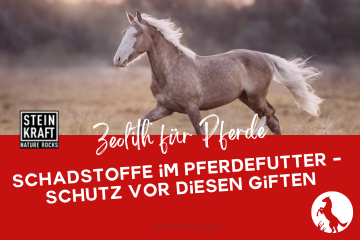

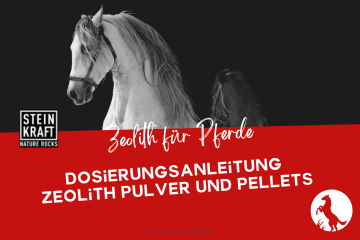
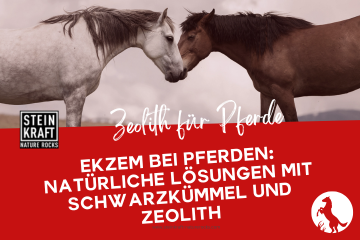

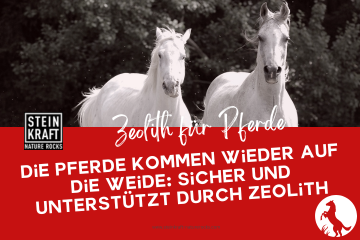
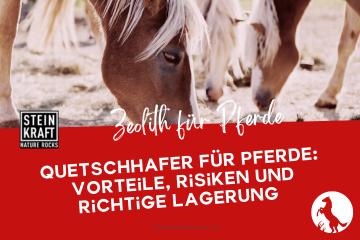

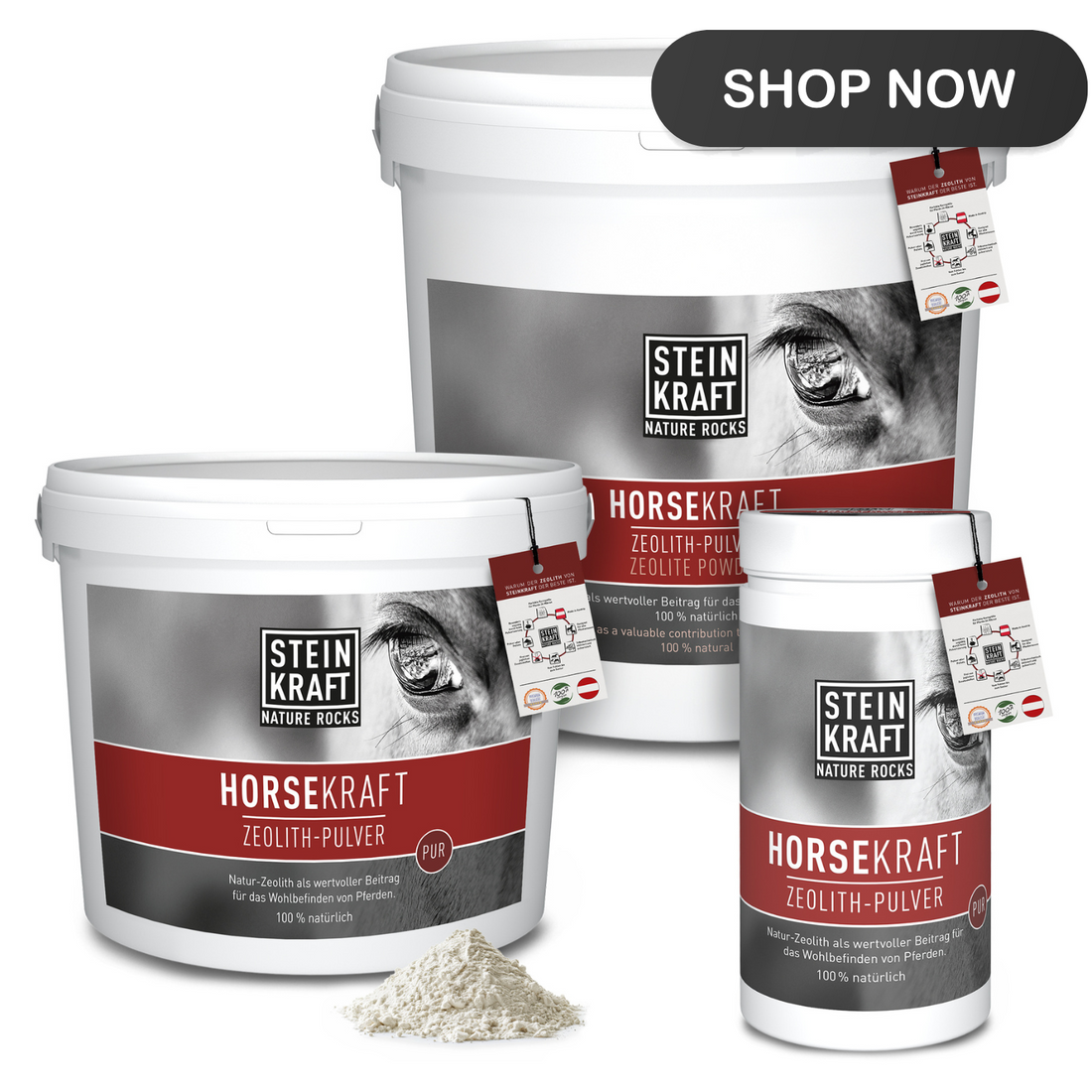
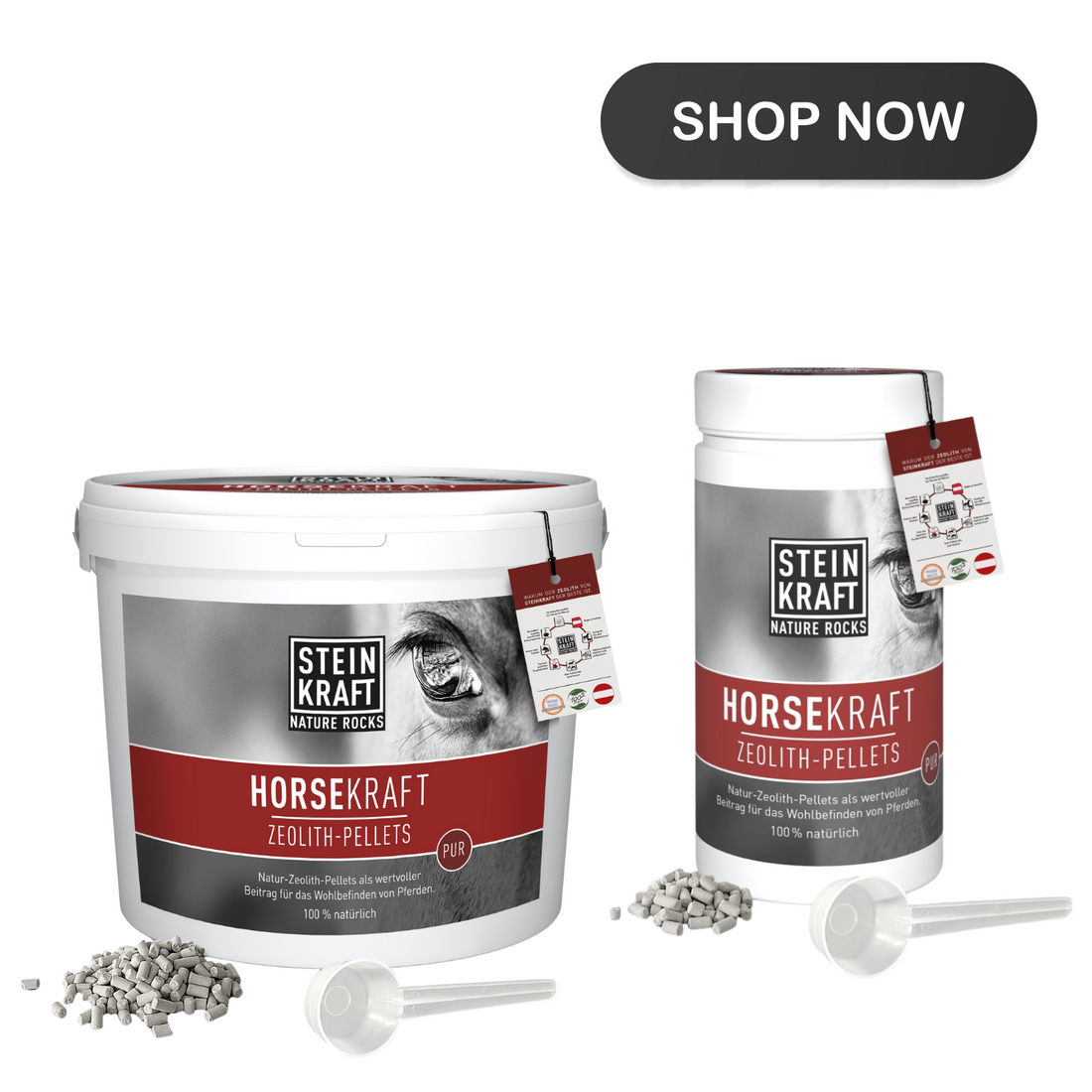
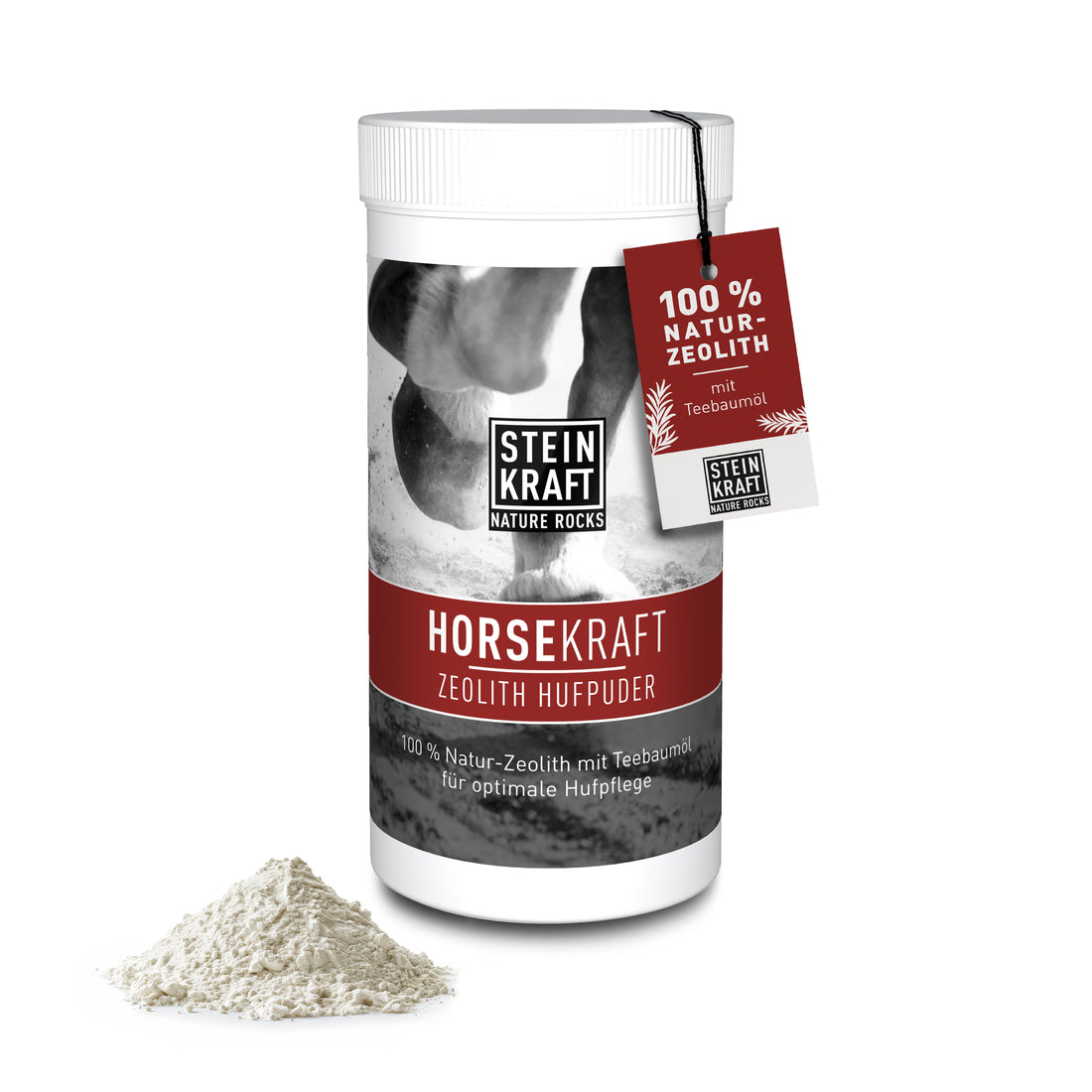
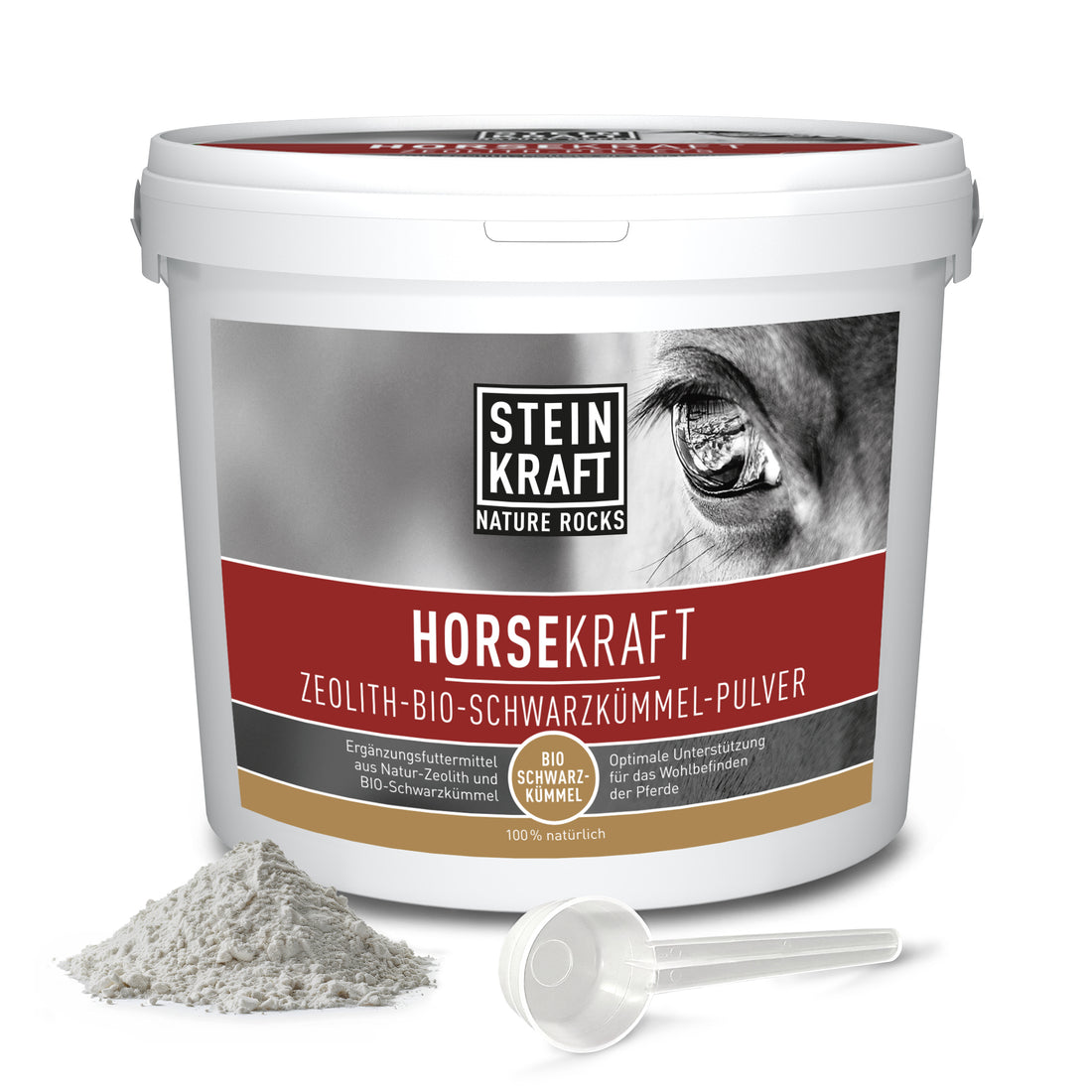


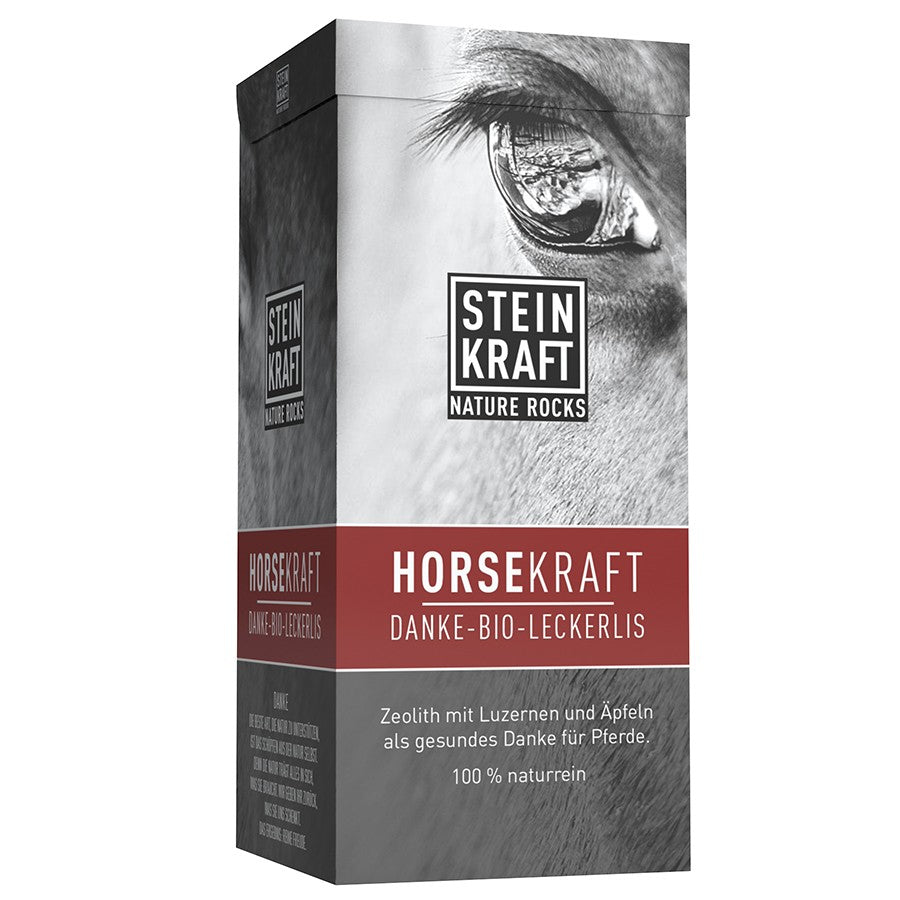
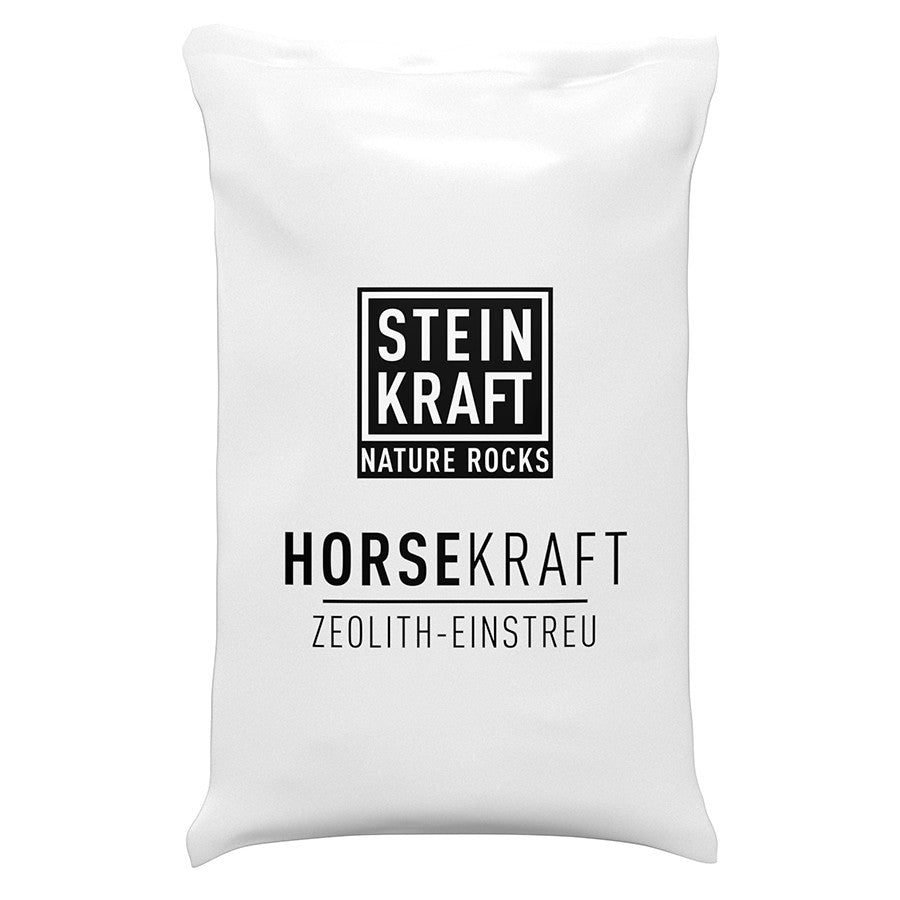
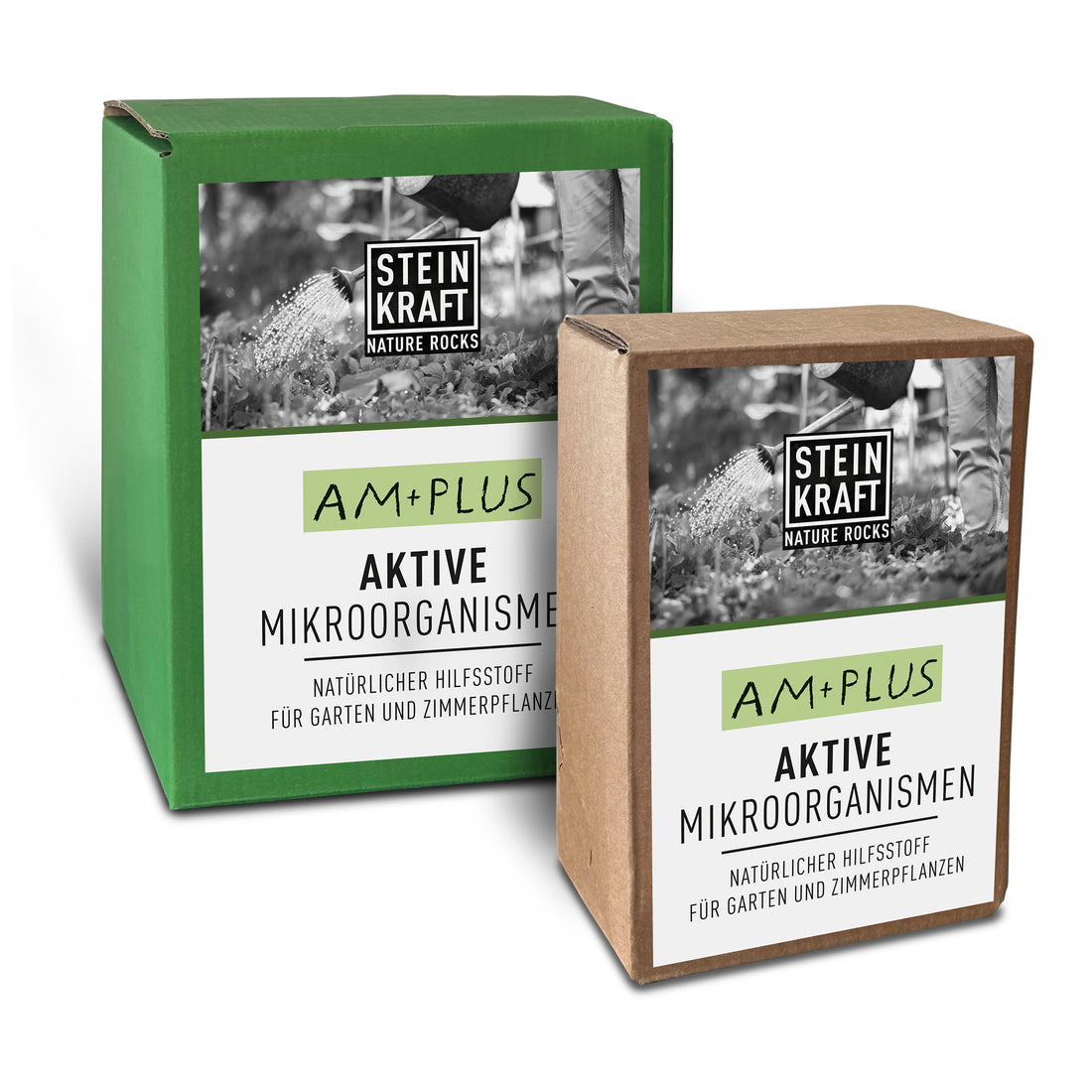
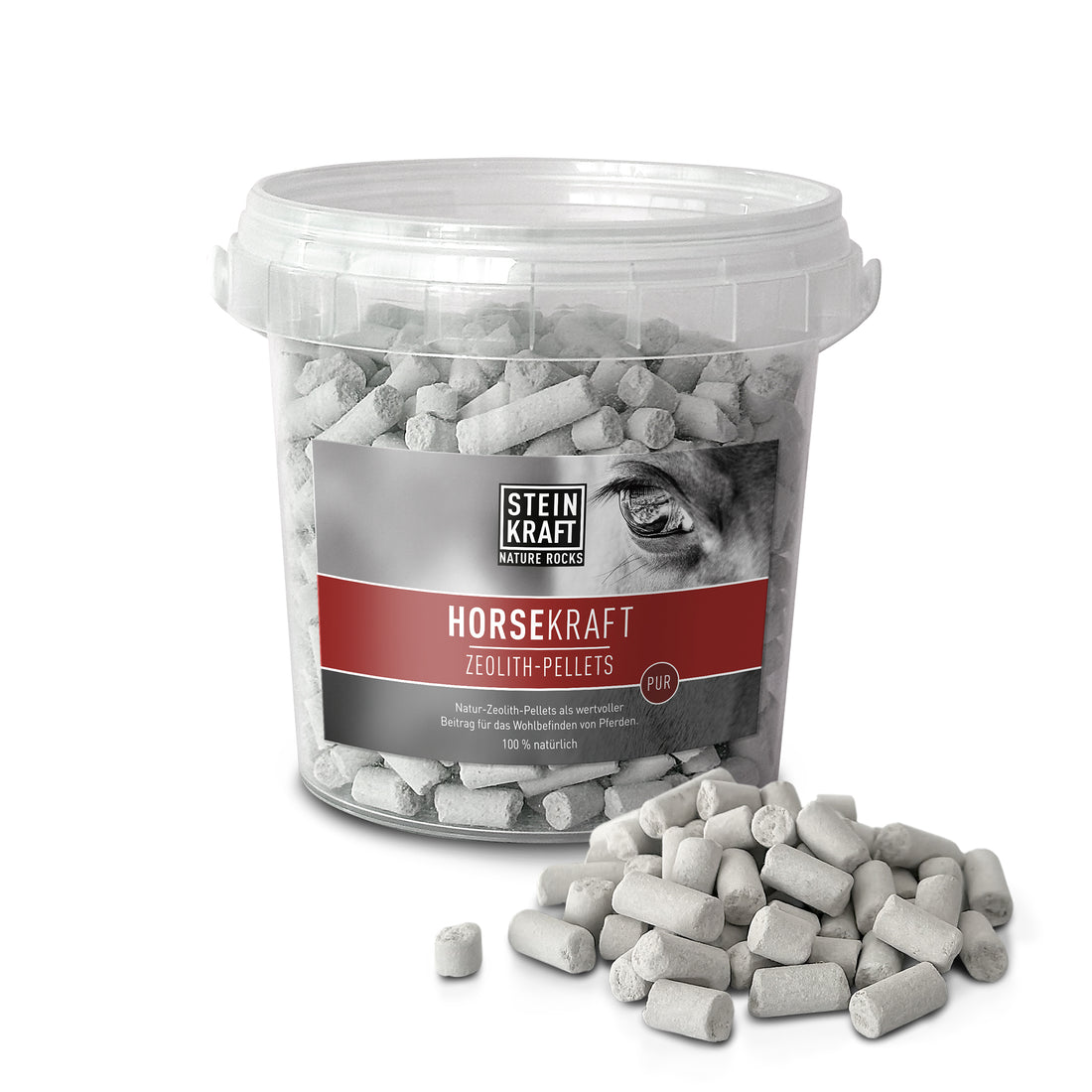












4 comments
Danke für den Tipp mit dem schrittweisen Einschleichen! Ich hab’s anfangs zu schnell gesteigert, da war mein Pferd erst skeptisch. Jetzt klappt’s wunderbar.
Leicht zu füttern, beides – Pulver und Pellets. Kein Kotwasser jetzt im Herbst. Früher war im Oktober Kotwasser-Zeit und wir haben viel ausprobiert und Geld ausgegeben. Zeolith seit Ende des Sommers dazu und kein Schweifputzen mehr.
Bekommen meine Pferde jetzt dauerhaft. Habe mit Kuren begonnen im Frühjahr und im Herbst und gebe ihnen jetzt täglich Zeolith dazu. Meine Stallkolleginnen bemerken, dass bei meinen 2 kein Tierarzt mehr kommt. Kein Kotwasser und keine Fellprobleme mehr. Wollte das einmal da her schreiben.
Danke für den aussagestarken Blog
Meine Stute mittlerweile stolze 29 Jahre alt, hat mit dem Fellwechsel und der Futterumstellung schon so ihre Probleme. Daher habe ich mich auf die digitale Suche gemacht, welche natürliche Version sie hierbei unterstützen kann und bin direkt bei Steinkraft gelandet. Ich bin sehr angetan von dem, was ich hier lese und habe gleich einen 3kg Kübel bestellt.